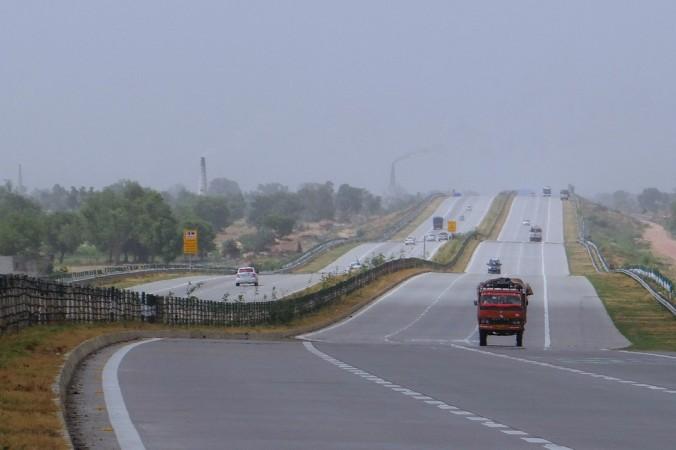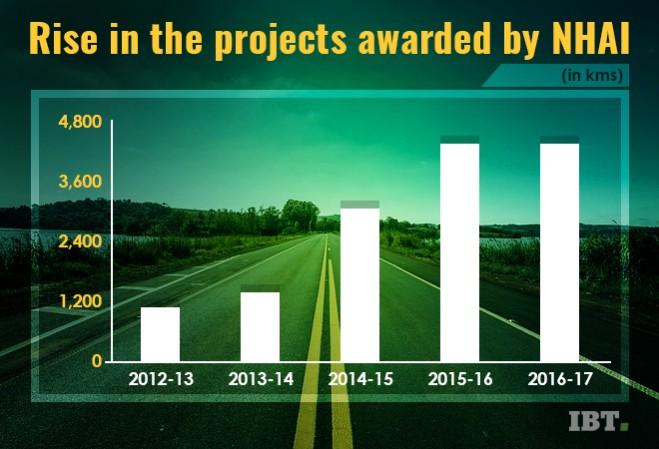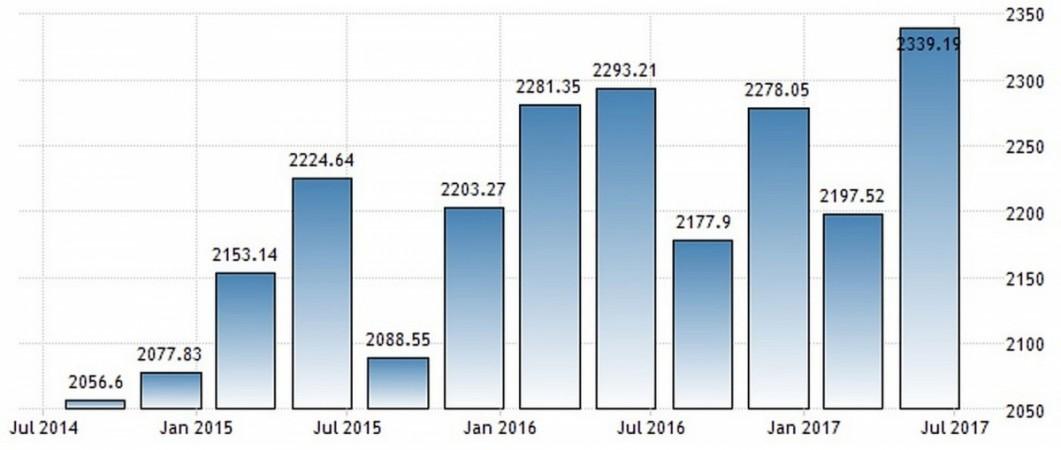
Who would have thought government-developer consortiums can work some serious wonders if they set their minds to it? The warm-up to getting it right on building highways quick and fast is segueing into full activity mode.
Of all of India's highway building feats down the decades, the pace of completion has been most marked under the National Democratic Alliance (NDA) government – an undeniable fact when facing an uncommon example of growth numbers being overwhelmingly in the government's favour.
This is in keeping with the government's seriousness which was evident in the Union Budget 2017-18 allocation of a massive Rs 9.10 lakh crore to road development.
According to a July report by Nomura, national and state highways in India comprise less than 5 percent of the roads but account for 80 percent of traffic.
The need to keep the building exercise going to accommodate the ever increasing traffic load on India's highways means that the government will have to build an additional lane every three years on investments in the range of Rs 80,000 crore, says Minister for Road Transport and Highways Nitin Gadkari.
On the fast lane
The last NDA government had given road building a firm financial and institutional footing by moving to corporatise the workings of the National Highways Authority of India (NHAI). But the pace of piling on the kilometres between June 2014 and January 2015 had been tardy in comparison with the equivalent period under the previous government.
Going by the present results which are in the right direction, it is evident that more than the structure of the authority, the Modi-led government has done some straight thinking about reforming the contract awarding model from the ground up.
Scroll down for video

The net effect of the present construction activity is large and positive. The increased budgetary allocation has meant a significant uptick in road construction activity. From a mere 9 km per day in 2014, road construction activity has surged to 25 km per day in the first quarter of this fiscal, as against 22.3 km per day in the entire 2016-17.
That's a farreaching improvement from the start of 2017 when NHAI feared that it would miss its target of awarding 15,000 km of road projects during the year ending March 31. For a company reportedly on the cusp of an IPO to raise money to fund its projects, its reliance on banks that lend loans with huge delays which impact project deadlines, has worn thin.
The reasons contributing to the uptick have been a change in the model beneath which the road projects are now awarded – a startling scrambling of the earlier BOT highway building model.
For the past few years, the government has been awarding projects under the 'Build Operate Transfer' (BOT) model. Under this model, the developer had to arrange all of the financing for the project and was also responsible for toll collections, exposing them to the risk of low traffic.
Because these projects require a huge amount of capital, the debt levels of many companies reached critical levels.
The HAM tipping point
To address the issue, the government introduced the 'Hybrid Annuity Model' (HAM). Under this model, the developer arranges 60 percent of the financing, with the balance 40 percent coming from the government. Further, the developer has no traffic risk -- low passenger traffic will not impact revenues. The icing on the cake is that the developer gets fixed payments from the government every year till the time the project is operational.
India's GDP from construction (Rs billion)

The developers preferred this model, and in 2016-17, around 56 percent of all government projects were HAM projects. Between April 2016 and January 2017, NHAI awarded 50 projects spanning about 2,914 km under the build, operate, transfer (BOT), HAM and engineering, procurement, construction (EPC) models, according to data available on NHAI's website.
NHAI's blockbuster performance in road completion has been achieved despite awarding activity suffering due to insufficient land acquisition during the last fiscal.
If NHAI reaps substantial dividends from an IPO float, a sizeable portion of the proceeds could be utilised in rural connectivity projects.The government plans to start 30 rural connectivity projects at an investment of Rs 8 lakh crore, of which five will begin in three months. It has already given out works of over Rs 5.6 lakh crore.
Frequent changes at NHAI's helm have been perceived as a possible hindrance to strong decision making and autonomy, which could affect investor confidence. The authority's chairman Deepak Kumar is its fourth in a span of two years. Taking HAM ahead would mean giving Kumar a longer stint at the top which would imply greater autonomy in building on the gains of the hybrid-annuity model.
Besides, though significant improvements in road construction have been achieved, issues pertaining to land acquisition and sustainable environmental clearances, besides greater transparency and sensitivity while facing public and activist concerns, pose important challenges. Resolution of these issues could provide huge opportunities for road construction companies and job creation.
















